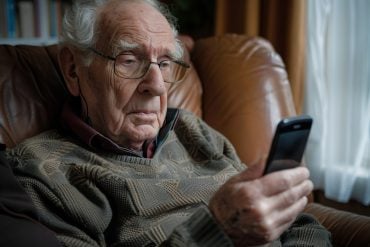Summary: Researchers report the most effective way to reduce internal, visceral fat is to exercise.
Source: UT Southwestern Medical Center.
Scientists know that the type of fat you can measure with a tape isn’t the most dangerous. But what is the most effective way to fight internal, visceral fat that you cannot see or feel? The answer: exercise.
Researchers at UT Southwestern Medical Center analyzed two types of interventions – lifestyle modification (exercise) and pharmacological (medicine) – to learn how best to defeat fat lying deep in the belly. The study is published in Mayo Clinic Proceedings.
“Visceral fat can affect local organs or the entire body system. Systemically it can affect your heart and liver, as well as abdominal organs,” said senior author and cardiologist Dr. Ian J. Neeland, Assistant Professor of Internal Medicine. “When studies use weight or body mass index as a metric, we don’t know if the interventions are reducing fat everywhere in the body, or just near the surface.”
To find out, the researchers evaluated changes in visceral fat in 3,602 participants over a 6-month period measured by a CT or MRI exam. Both exercise and medicines resulted in less visceral fat, but the reductions were more significant per pound of body weight lost with exercise.
“The location and type of fat is important. If you just measure weight or BMI, you can underestimate the benefit to your health of losing weight,” said Dr. Neeland, a Dedman Family Scholar in Clinical Care. “Exercise can actually melt visceral fat.”
Participants in exercise trials were 65 percent female, with a mean age of 54 and mean BMI at enrollment of 31. Exercise regimens were monitored, not self-reported. The majority of exercise trials were performed in the U.S. and Canada, while pharmacologic trials included the U.S., Canada, Sweden, Japan, and four multinational cohorts.

The medications used by study participants were FDA approved or in the FDA approval pipeline.
According to the Centers for Disease Control and Prevention, obesity affects nearly 40 percent of adult Americans. Dr. Neeland said researchers previously thought of fat as inert storage, but over the years this view evolved and fat is now seen as an active organ. “Some people who are obese get heart disease, diabetes, or metabolic syndrome – and others don’t,” Dr. Neeland said. “Our study suggests that a combination of approaches can help lower visceral fat and potentially prevent these diseases.”
Other UT Southwestern researchers who contributed to this work include Dr. Shreya Rao, cardiology fellow; Dr. Ambarish Pandey, Assistant Professor of Internal Medicine; Dr. Bryan Park, internal medicine resident; Helen Mayo, Faculty Associate; Dr. Dharam Kumbhani, Associate Professor of Internal Medicine; and Dr. James A. de Lemos, Professor of Internal Medicine. Dr. de Lemos holds the Sweetheart Ball-Kern Wildenthal, M.D., Ph.D., Distinguished Chair in Cardiology.
Source: Lori Soderbergh – UT Southwestern Medical Center
Publisher: Organized by NeuroscienceNews.com.
Image Source: NeuroscienceNews.com image is in the public domain.
Original Research: Abstract for “Effect of Exercise and Pharmacological Interventions on Visceral Adiposity: A Systematic Review and Meta-analysis of Long-term Randomized Controlled Trials” by Shreya Rao, MD, Ambarish Pandey, MD, Sushil Garg, MD, Bryan Park, MD, Helen Mayo, MLS, Jean-Pierre Després, PhD, Dharam Kumbhani, MD, James A. de Lemos, MD, Ian J. Neeland in Mayo Clinic Proceedings. Published January 28 2019.
doi:10.1016/j.mayocp.2018.09.019
[cbtabs][cbtab title=”MLA”]UT Southwestern Medical Center”Exercise is Your Best Defense Against Deep Abdominal Fat.” NeuroscienceNews. NeuroscienceNews, 32 February 2019.
<https://neurosciencenews.com/exercise-abdominal-fat-10679/>.[/cbtab][cbtab title=”APA”]UT Southwestern Medical Center(2019, February 32). Exercise is Your Best Defense Against Deep Abdominal Fat. NeuroscienceNews. Retrieved February 32, 2019 from https://neurosciencenews.com/exercise-abdominal-fat-10679/[/cbtab][cbtab title=”Chicago”]UT Southwestern Medical Center”Exercise is Your Best Defense Against Deep Abdominal Fat.” https://neurosciencenews.com/exercise-abdominal-fat-10679/ (accessed February 32, 2019).[/cbtab][/cbtabs]
Abstract
Effect of Exercise and Pharmacological Interventions on Visceral Adiposity: A Systematic Review and Meta-analysis of Long-term Randomized Controlled Trials
Objective
To assess the effectiveness of exercise and pharmacotherapy interventions in reducing visceral adipose tissue (VAT).
Patients and Methods
A systematic search of Ovid MEDLINE, Scopus, Web of Science, Cochrane Library, ClinicalTrials.gov, New York Academy of Science Grey Literature Report, and OpenGrey was combined with hand searches of existing literature. A total of 2515 titles and abstracts were reviewed. Only randomized controlled trials evaluating the effectiveness of monitored exercise or pharmacological interventions in reducing VAT by using computed tomography or magnetic resonance imaging during a sustained intervention period (≥6 months) were included. Data were independently extracted by reviewers according to the Preferred Reporting Items for Systematic Reviews and Meta-Analyses guidelines and assessed for quality and risk of bias. Separate analyses for each intervention were performed using random effect models, with pooled estimates of the change in VAT area (in centimeters squared) from baseline to follow-up reported as standardized mean difference (SMD; with 95% CI).
Results
A total of 3602 participants from 17 randomized controlled trials were included in the final analysis. Both exercise and pharmacological interventions were associated with significant reductions in VAT: small reduction with pharmacological interventions (SMD, −0.27; 95% CI, −0.47 to −0.07; P=.02) and more substantial reductions with exercise interventions (SMD, −0.54; 95% CI, −0.63 to −0.46; P<.001). The mean absolute VAT reduction was greater in pharmacological trials than in exercise trials. Meta-regression exhibited a linear correlation between VAT and weight loss (R2=0.52 for exercise and R2=0.88 for pharmacological interventions), but VAT reduction relative to weight loss differed by intervention type.
Conclusion
Exercise interventions resulted in greater reduction in VAT relative to weight loss than did pharmacological interventions. A preferential reduction in VAT may be clinically meaningful when monitoring success of interventions because weight loss alone may underestimate benefits.
[divider]Feel free to share this Neuroscience News.[/divider]







